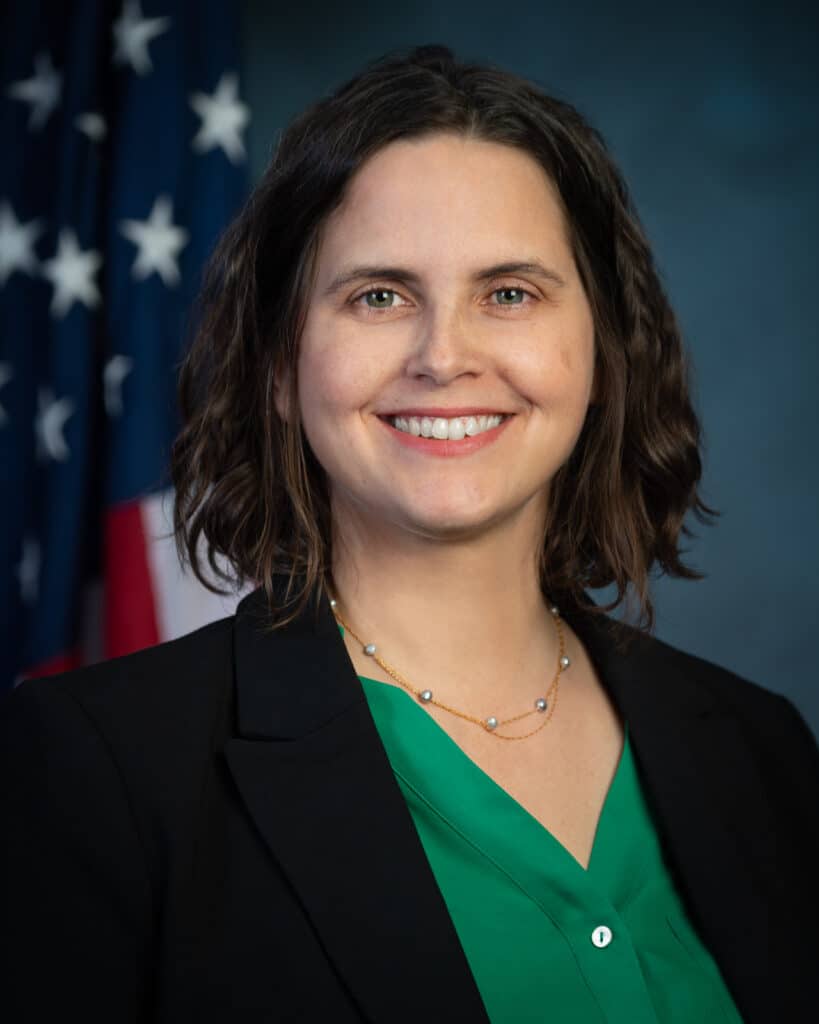The following article provides highlights from NRMLA’s Eastern Regional Meeting, May 29, in Washington, DC.
During an interview with NRMLA Chairman Mike Kent, Deputy Assistant Secretary for Single-Family Housing Sarah Edelman shared these insights.
- Reducing Upfront Costs. “We are currently reviewing a proposal that NRMLA submitted and doing the analysis to see if there’s a safe and sound way to provide relief on the upfront MIP,” said DAS Edelman. She also expressed a desire to examine all HECM closing costs and find opportunities to make them more transparent and understandable for consumers.
- Recent Accomplishments. The most impactful achievements over the past year, according to DAS Edelman, include the publication of the HECM Handbook, allowing mortgagees to assign loans to HUD at 97 percent of the maximum claim amount, and offering new alternatives to foreclosure (ML 2023-23).
- Assignment Claims. Since the beginning of the year, FHA has trained its staff and worked closely with HECM servicers to improve efficiencies for submitting assignment claims. Despite challenges, denial rates and turnaround times to get claims approved have improved. “Continued engagement with servicers will be important as we look to tweak and improve,” said DAS Edelman.
- Homeowners Insurance. The rising cost of homeowners insurance is “front of mind” across HUD and other federal agencies. “One area that I would like to see us delve into over the next year is looking at LESAs to make sure borrowers are setting aside enough money for taxes and insurance.”
- Importance of HECM. “The HECM program is more important than ever as our country ages,” said DAS Edelman. “I look forward to working with NRMLA to strengthen and improve the HECM because we need a robust program to serve the next generation of aging Americans.”
In a separate conversation with NRMLA Board member Michael McCully, Acting Ginnie Mae President Sam Valverde shared insights on the capital markets side of the business.
- Current capital market conditions. “Late 2022 was an incredibly challenging time across financial markets and in the reverse mortgage sector. We’ve improved considerably since then and I hope that we continue to see improvement. We are constantly talking with our issuers and NRMLA to see how folks are doing. It’s important that we continue to be focused. We’re going to approach policy changes at Ginnie Mae with urgency because this environment is one in which we cannot be complacent.”
- Managing the RMF portfolio. “It was a significant undertaking for Ginnie Mae. Servicing is complex. We have to pay draws on time, which is an obligation that Ginnie Mae takes very seriously. We’ve accomplished this with the help of our servicing counterparty partners. We are creating “tails” at a high pace. We have over $1 billion in “tails” accrued that we have not securitized. That number will be closer to $2 billion by the end of next year. That’s an important asset to consider. One authority that we have is to issue securities from a defaulted portfolio. But that’s an authority we’ve never exercised before, so we’re thinking through the steps to become an issuer for our own account to put liquidity back into the market. We’re looking at an 18- to 24-month build.
- HMBS 2.0. In January, Ginnie Mae announced that it was exploring a new HMBS program to allow HECMs with balances above 98 percent of MCA to be bought out of their existing securities and re-securitized into new pools. “I am happy to announce that we’re ready to start moving the program forward. Our next step is to begin taking public feedback on program structures,” said Valverde. “Inside of June, we’ll be releasing a notice for public input that lays out the nature of the program as we see it. We want feedback from NRMLA, issuers and others to make the program better.”

